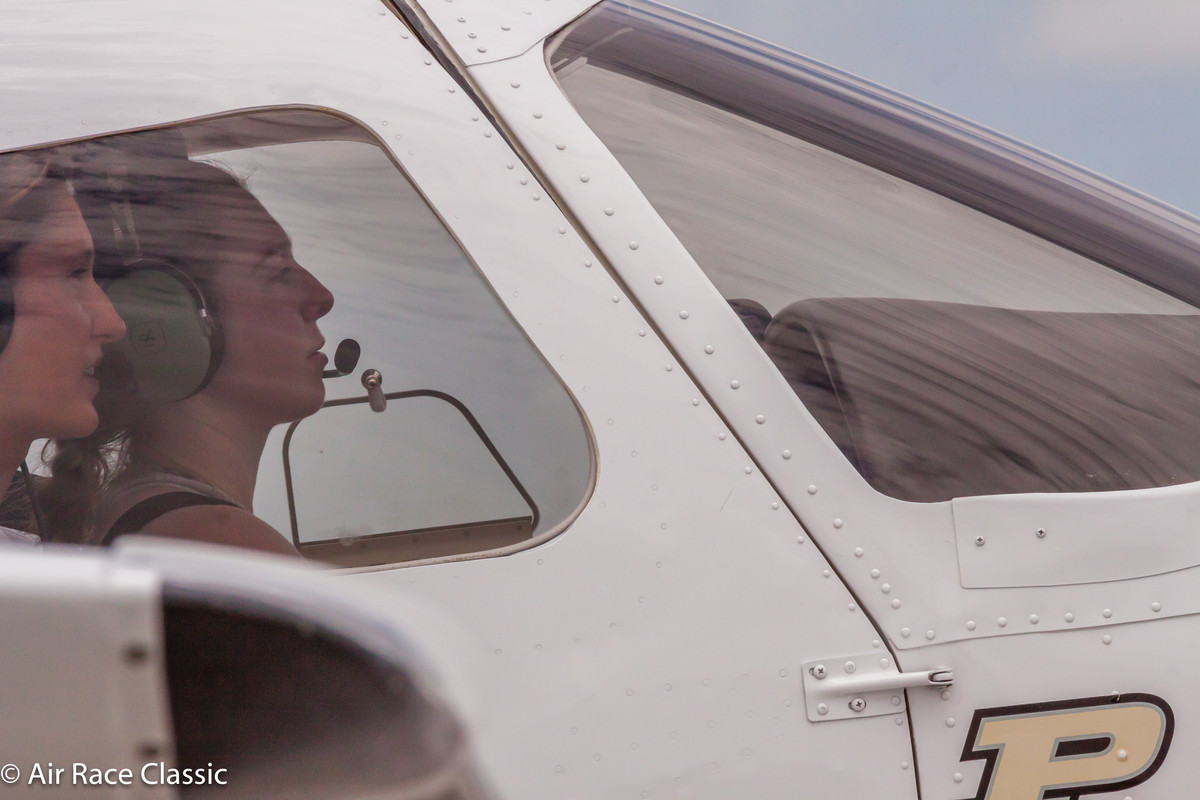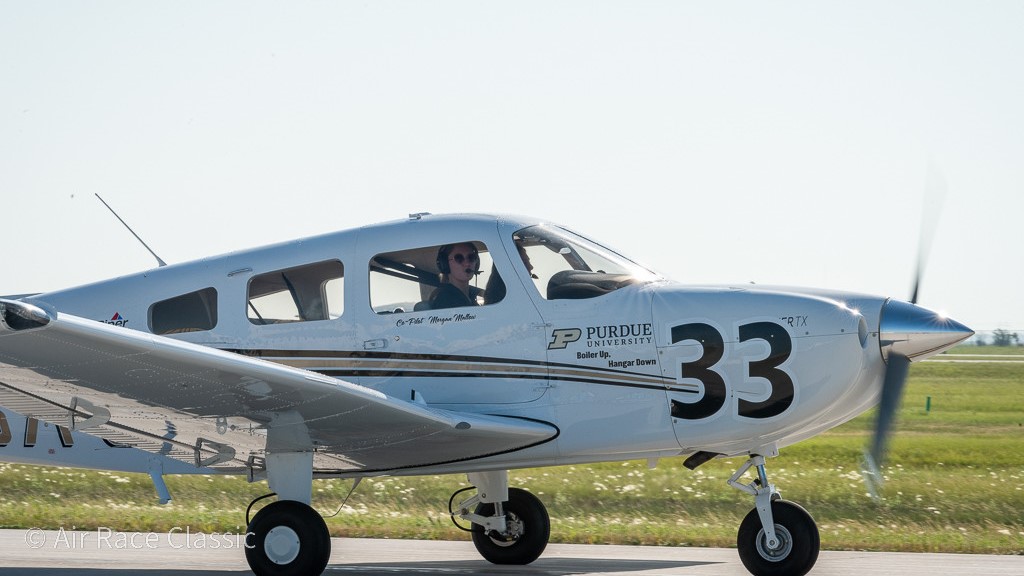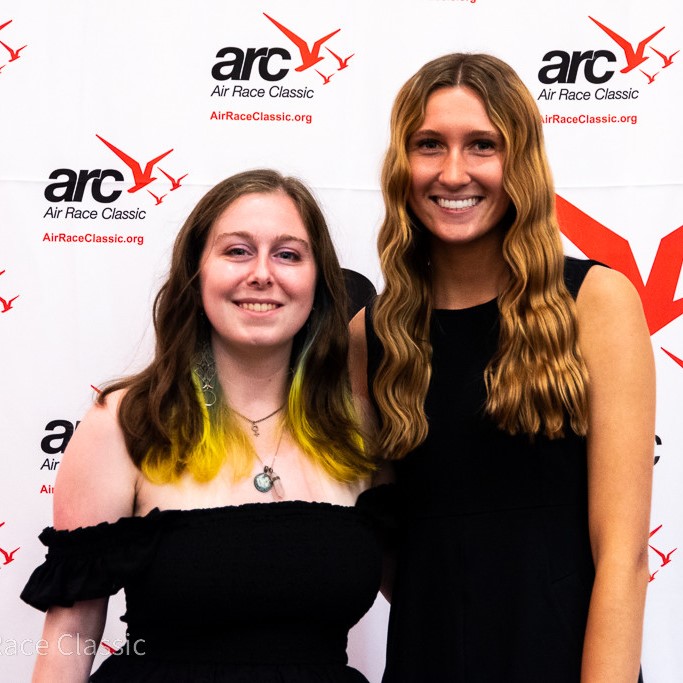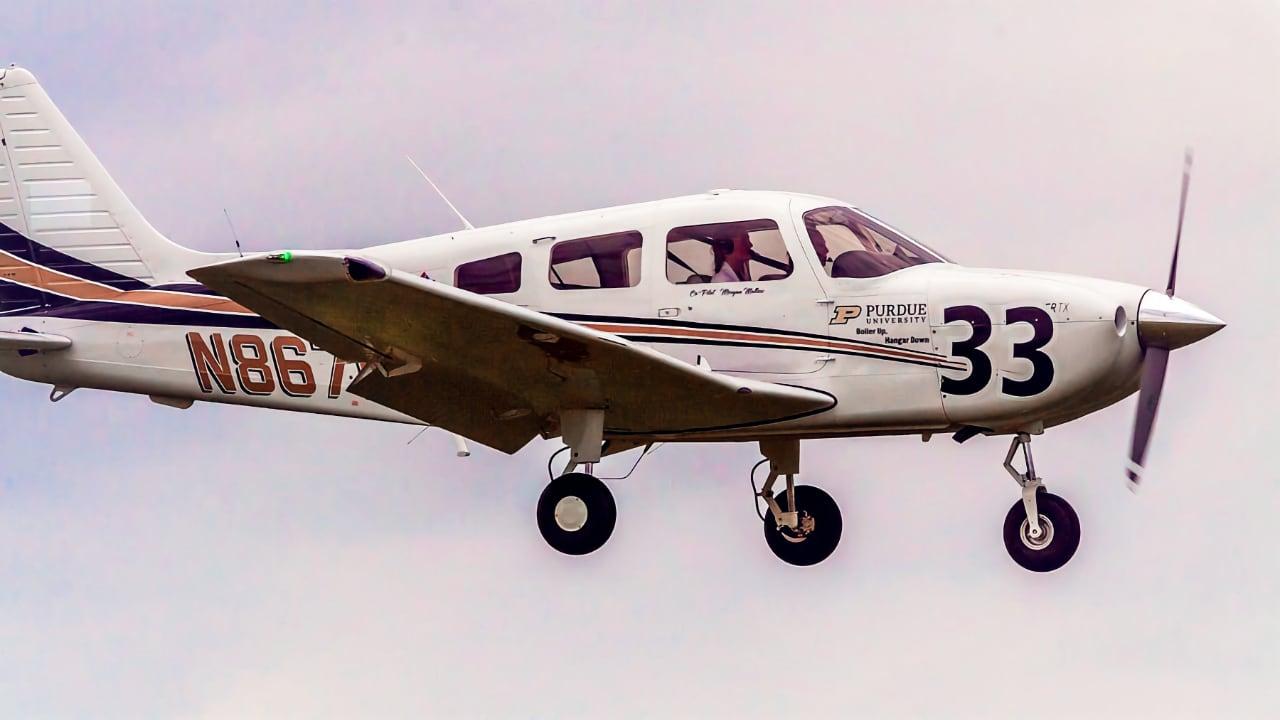On June 23, the Purdue-based aviation crew “Boiler Up, Hangar Down” scored a top ten spot in the annual Air Race Classic, out of a competition class of 43 teams.
Air Race Classic organizers call the event “the epicenter of women’s air racing.” Purdue’s team was comprised of pilots and Purdue Polytechnic professional flight majors Alex Small and Morgan Mallow, and a ground crew led by Ankita Patra and Reyna Dodd.
The Air Race Classic route – which changes each year – took the duo from Grand Forks, North Dakota to Homestead, Florida, in an over 2,500-mile trek with stops in nine states. At the end of the four day-long journey, Small and Mallow were the eighth highest-scoring team of the race and received no penalty points.

“[Our team] placed in the top ten overall, and were fourth place among collegiate racers. And, the team earned the trophy for ‘fastest Piper,’” said Lucero Duran Trinidad, chief flight instructor at Purdue Polytechnic’s School of Aviation and Transportation Technology. “Piper” refers to the aircraft flown by Small and Mallow, a Piper-brand plane in the Archer line.
The Air Race Classic hosts a wide variety of female aviation specialists, “[ranging] in age from 17 to 90+ years old,” organizers said. From enthusiasts to professional pilots of all types, the competition is diverse and often made up of long-time, seasoned fliers. Among the race teams for 2023, Small and Mallow were competing with nearly 100 other pilots.
“The ground crew worked tirelessly to get the pilots the information they needed regarding weather, performance data, and aiding with decisions for the next leg of the race,” Trinidad said. In a separate conversation, pilot Small also emphasized similar points of interest. "One of the most significant challenges was the combination of weather, fatigue and external pressure," Small (a veteran of last year's race) stated.
The Air Race Classic is more than an endurance test alone. The ability for pilots and their ground crew to make difficult, strategic decisions will have a direct result in their race outcome. Somewhat jokingly, 2014-15 Air Race Classic alumna Carly Namihira told this year’s pilots, “the most difficult part of this air race is having to deal with your teammates.”

Beyond being stuck effectively “in a box” with teammates, as Namihira explained, pilots must have effective communication with one another and with their ground team for “crew resource management.” One primary example is deciding when the team should stop at a designated airfield to refuel and rest.
"One major standout moment occurred in Hastings, Nebraska. A bunch of the teams were grounded due to thunderstorms, so we were camped out in a hangar with a handful of super old airplanes. The volunteers made us home-cooked meals, and we sat around the airplanes eating and sharing stories. As much as we wanted to be in the air, it was a moment where you realize how lucky you are to be part of a community like this," Small said.
With only 10 designated stops along the route, the options for rest are not unlimited. Small and Mallow decided to stop at Hastings on the first night (a stint of nearly 850 miles), the fourth airfield on the next night and the eighth airfield after that (294 miles and 1,222 miles respectively), before completing the home stretch of 400 miles on the final day.
Learning to make strategic decisions such as when to schedule overnight landings, how quickly one can get back up in the air after refueling, and dealing with rules and regulations in addition to weather conditions are all a consequence of hands-on experience.

"Every team in the race has different experience levels and personal minimums, so we really had to separate ourselves from that when making 'go, no-go' decisions," Small said. "We confronted quite a few thunderstorms along the route that put our aeronautical decision-making to the test. As much as we wanted to get to the finish line, patience was the key."
“We are very proud of the team, as last week’s result shows that their hard work over the academic year has paid off,” Trinidad stated.
The Air Race Classic, which has open registration for any qualified team on a year-to-year basis, is in its 92nd year, having only missed two years since its inception in 1929: in 2020, it was canceled as a consequence of the COVID-19 pandemic. The other cancelation occurred in 1974, as a consequence of dramatic fuel price increases or “oil shocks” that wracked the U.S. throughout the 1970s.
Among the 20 aviators who took part in the original “Women’s Air Derby” in 1929 was future Purdue alumna Amelia Earhart.
Additional information
- The Air Race Classic
- 2023’s Air Race top ten
- 2023 race map and route description
- Grand Forks Soars with the Air Race Classic (University of North Dakota)
- Purdue Air Race Classic team takes to the skies (2022)
- Student pilots to represent Purdue in women’s air race (2019)
- Professional flight team to compete in women’s Air Race Classic (2017)

